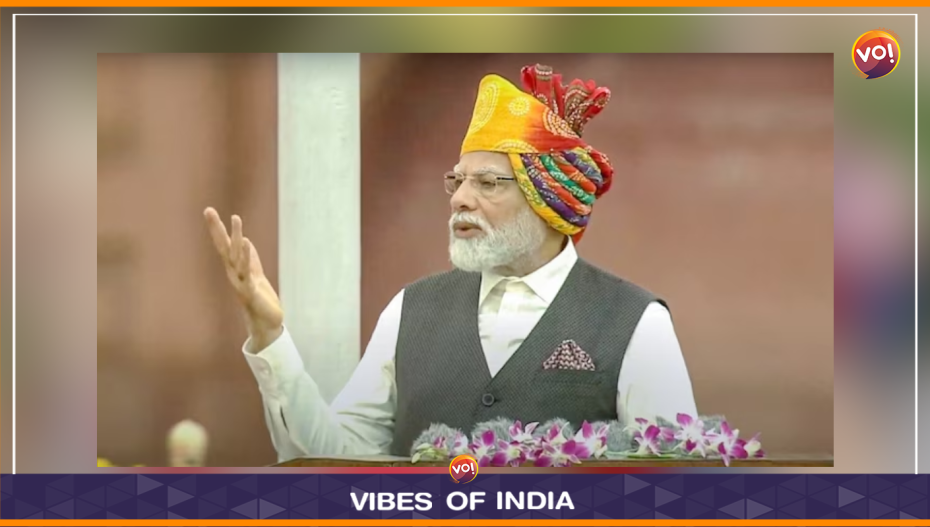I, me, and myself. It was hard to miss the essence of personal pronouns in Prime Minister Narendra Modi’s Independence Day speech on the bulwarks of the Red Fort.
Political analysts called the speech election rhetoric.
The Wire writes: “In times of generative AI, it is easy to compile a speech for Prime Minister Narendra Modi. He has now delivered ten Independence Day addresses and a clear pattern emerges. He will claim sole credit for every achievement, often appropriating inevitable progress as a major success; he will ignore facts and deftly disregard past promises, and brush aside legitimate concerns of the people. His rhetoric often has a lofty vision that is devoid of a plan of action.”
While India’s PM rightly cited corruption and appeasement as impediments to India’s growth, he predictably referred to dynastic politics which, he believed, had been holding the country back.
As The Quint mentions in an incisive editorial, “Prior to 2014, he used to describe the Congress-led UPA government at the Centre as the ‘Delhi Sultanate’ and Rahul Gandhi as ‘Shehzada’ during election rallies. The words have changed over the years; but the message is still the same: the Modi-led Bharatiya Janata Party (BJP) is determined to finish dynasty politics in the country once and for all.”
The question that has been asked is: has Modi succeeded in making dynasty politics obsolete? Has he weaned voters off Parivar Jan?
The Quint editorial believes that the hypothesis that dynasties in Indian politics have ended is sheer baloney. It reminds that “the only two successful battles he has won are the 2014 and 2019 Lok Sabha polls.”
“In almost every other election where a dynasty or dynast has been a rival, the BJP has either lost or failed to decimate dynasties even where it has won,” it notes.
Further, it says: “Many commentators have already pointed out how sons, daughters, cousins, and spouses of BJP leaders have been contesting elections and creating their own ‘mini dynasties’. Two prominent ones are the erstwhile Royal family of Gwalior – the Scindias and the inheritors of the legacy of the late Gopinath Munde.”
The DMK, the editorial highlights, is an openly dynasty-driven party in Tamil Nadu. From 2006 until 2011, the original patriarch M Karunanidhi served as chief minister before handing the party power to his younger son MK Stalin. His daughter Kanimozhi and their cousins, the Marans, form the foundation of the dynasty. Stalin came close to winning the 2016 Assembly Elections.
But in the 2021 elections, he guided the DMK-led coalition to a resounding win. Stalin might win again given that his primary competitor, AIDMK, is in shambles.
Let’s shift to Andhra Pradesh and Telangana. In Andhra Pradesh, the dynast YS Jagan Mohan Reddy comprehensively prevailed over his rival N Chandrababu Naidu, another dynast. In Telangana, the patriarch KC Rao won two consecutive elections.
Further, the editorial notes that in Maharashtra, despite repeated revolts, the Uddhav Thackeray-led Shiv Sena is still recognised by ordinary voters as the real Shiv Sena founded by patriarch Balasaheb Thackeray.
In the east, Naveen Patnaik has won many elections in Odisha. It can’t be denied that being the son of Biju Patnaik largely enhanced his profile.
Meanwhile, Abhishek Banerjee is all set to take over the reins of the party TMC from his aunt Mamata Banerjee. In Rajasthan, another dynast Sachin Pilot is billed as Rajasthan Congress’s future.
That dynastic politics wouldn’t die anytime soon can be gauged by what happened in the assembly elections up north in 2019. The BJP failed to win a majority until a dynast called Dushyant Chauthala rescued the party.
The editorial concludes by saying that going after parivar jan helps garner attention. But it’s a reality that the system has existed for years and continues to flourish.
Also Read: China Conceals Increasing Amounts Of Data Amid Growing Concerns













